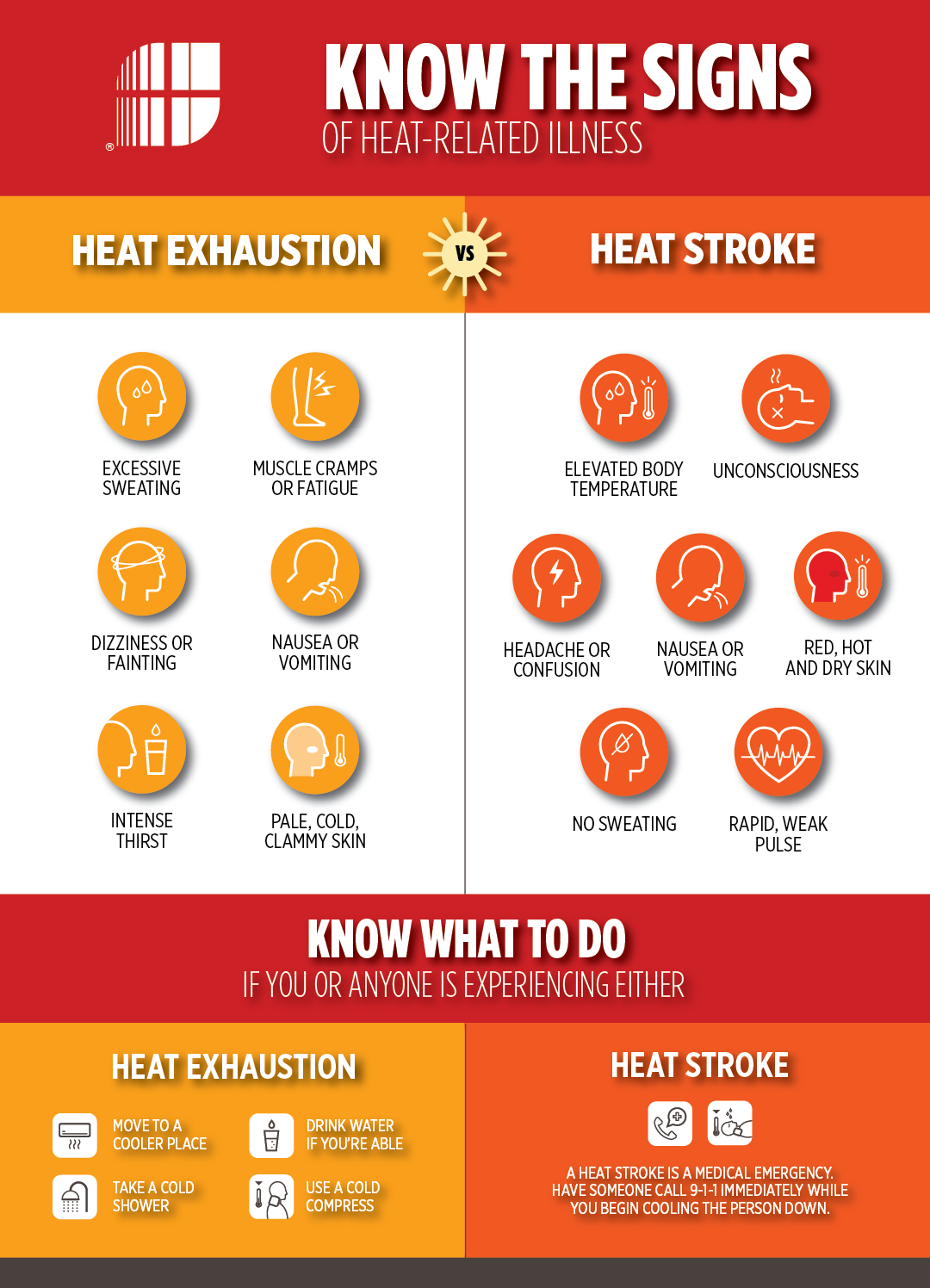Hot weather is here
June 20, 2024
Spending time outdoors on a hot day can be downright uncomfortable, especially when Valley temperatures can exceed 110 degrees during the summer. If you’re not careful or moderating your outdoor time, you can greatly increase your risk of heat-related illness, such as heat exhaustion or heat stroke.
Heat stroke is a condition that can cause serious health complications – or even death –and should be considered a medical emergency. Heat stroke occurs when your body struggles to regulate its temperature. Although heat stroke can occur any time it is hot, the condition is more likely to happen if it’s hot and humid. That’s because it’s more difficult for sweat to evaporate from your skin due to increased moisture in the air. Evaporation provides a natural cooling effect that prevents overheating.
It’s important to be able to identify common heat stroke symptoms. Knowing how to avoid heat-related illness that can lead to heat stroke can also protect your health this summer.
Heat stroke symptoms

If you have heat stroke, you may develop one or more of these symptoms:
- 104 degree fever or higher
- Rapid or shallow breathing
- Dry and/or red skin
- Headache
- Nausea or vomiting
- Slurred speech
- Confusion
- Seizures
- Weak, rapid pulse
- Unconsciousness
If you or anyone else around you experiences these symptoms, call 9-1-1 immediately. Move to a cool place while waiting for the ambulance to arrive. Remove extra clothing, lie down with legs raised and sip water or a sports drink. Resting in a tub filled with cool (not cold) water or applying cool compresses to the groin, neck and armpits will help lower body temperature.
How to prevent heat stroke
Although heat stroke is a very dangerous condition, prevention is easy. Just follow these steps:
- Pay attention to symptoms. Heat exhaustion can progress to heat stroke if you don’t get out of the heat. Heat exhaustion symptoms may include headache, dizziness, heavy sweating, muscle cramps, dizziness, rapid heartbeat, weakness, vomiting, nausea and pale skin.
- Look at the heat index. The heat index takes into account the air temperature and the effects of relative humidity. The American Academy of Family Physicians recommends being extremely careful if you’ll be spending time outside when the heat index is 90 degrees or higher.
- Make hydration a priority. If you’re outside on a hot day, be sure to drink water at least every 20 minutes to prevent dehydration. If you’re dehydrated, your urine will be dark yellow. You may urinate less than normal and feel dizzy, lightheaded, thirsty or tired.
- Check on vulnerable people. Young children and older adults are more likely to develop heat stroke. So are people who are overweight, have health conditions such as heart disease, or take medications for poor circulation, depression or insomnia. Check on these individuals often and urge them to go inside or move to a shady spot if they begin to show signs of heat exhaustion.
- Don’t think you’re immune. Heat stroke can affect anyone, even people who are physically fit. On hot and humid days, skip your workout or move it inside. Don’t perform strenuous activities and pay attention to signs of heat-related illness.
- Double-check the backseat. According to the National Safety Council, 37 children under the age of 15 die each from heat stroke after being left in a vehicle. If you’re traveling with children, always check your backseat when you arrive at your destination. Don’t leave your child in a hot car while you run errands, even if the windows are open. The interior of the car can become dangerously hot in as little as 10 minutes.
What level of care do I need?
Should you or someone you love experience a medical emergency due to heat-related illness, it’s important to know which level of care you need to ensure you get the appropriate care as quickly as possible.
